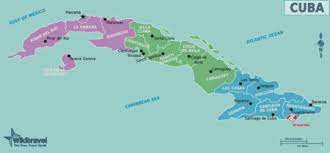As shocking as those protests were, they didn’t come out of the blue. Right now, Cubans are enduring the worst economic and social crisis since the 1990s, when the collapse of the Soviet Union plunged the island into a decade-long depression. Today’s upheaval, though, comes at a time of even greater political ferment on the Caribbean island. …
-
Best Australian Pokies Best Payout
Play Free 777 Pokies Online
What Are the Best Australian Pokies to Win Big On
What Are the Best Online Pokies with Low Minimum Deposits for Real Money in Australia
New Australian Pokies Accepting PayID
What Are the Best Strategies to Win in Online Pokies with Bonus Rounds in Australia
Tips for Winning Top Australian Pokies
What Online Casinos Offer Free Play Pokies with Welcome Bonuses in Australia
Australian Slot Games
Payout Ratio Pokies with Welcome Bonus

2. Write a research paper about CUBA covering ALL twelve (12) topics listed in this table: Entry Topic and Subheader. Landforms, Weather and Climate, Natural Regions, European Conquest and Politics.
Write a research paper about CUBA covering
· Take information from a primary and secondary source
· Evaluate the information to develop a coherent analysis or synthesis.
· Compose a well-organized, and concise report
Tasks: To complete this assignment you should:
1. Select a country of your choice from Latin America or the Caribbean.
2. Write a research paper about CUBA covering ALL twelve (12) topics listed in this table: Entry Topic and Subheader
1 Landforms
2 Weather and Climate
3 Natural Regions
4 European Conquest
5 Politics
6 Race, Ethnicity, and Class
7 Culture Regions
8 Religion
9 Agriculture and Food production
10 Mining, Manufacturing, and Tourism
11 Urbanization, Population Growth, and Migration
12 Development and Health
3. Content: All papers must follow the topics following the order as listed on the table above. Students are required to critically apply the concepts discussed in the course readings and textbooks to complete this assignment.
Latin American and Caribbean Readings ISBN: 9781516537556
Latin America and the Caribbean ISBN: 9780190497828
a. Text and Image Sources: Given the level of broad speculation and falsified claims made on the internet,
websites are extremely unreliable to use in this research. Therefore, it is recommended to abstain from using internet sources, which disguise their faultiness by providing selective references to some scholarly research.
The use of Google Scholar or any other library database to search for scholarly articles is encouraged, but avoid relying only on Google searches to research topics about Latin America. In addition, your paper must include text and any additional audiovisual material that may support or enhance the content under discussion. I encourage students to include maps to orient their audience, images and videos to illustrate cultural landscapes, and tables for quantifiable data.
Keep in mind that quantitative measurements about foreign locations are meaningless unless they are framed within comparative statements about familiar places.
Figures, maps, and tables only do not count toward the minimum pages required. Keep in mind that quantitative measurements about foreign locations are meaningless unless they are framed within comparative statements about familiar places. For example, you can compare the statistical data for your country with that of the United States.
b. This is a research paper not an essay or opinion paper so your submission must reflect your bibliographic research and include text and any additional audiovisual material that may support or enhance the content under discussion.
In-text citations and references must be provided for text, figures, tables, or data included from sources such as the course textbooks, additional readings, or academic web pages. Follow a proper intext (author/date/page number style) and bibliographic citation.
A New Culture of Dissent Is Remaking Cuba’s Politics
In mid-February, a court in Holguin, Cuba, about 500 miles east of Havana, handed down sentences of up to 20 years in prison to 20 people convicted of sedition the previous month.
Their crime, and that of the hundreds of others like them still awaiting verdicts elsewhere, was to have participated in widespread protests last summer, some peaceful but some violent, that took the Cuban government—and the world—by surprise.
Overview
Cuba can be divided into five geographic regions: Havana and Western Cuba, West Central Cuba, Central Cuba, East Central Cuba, and Eastern Cuba. Each region offers its own unique attractions, scenic draws, differences in climate and geography, and cultural distinctions. Here’s a quick overview of each region so you can best plan your trip.
When to Go
In general, Cuba has two distinct seasons: the dry season (November through May) and the wet season (June through October). However, seasons vary by region, and temperatures at any time of year tend to increase eastward. In summer, Eastern Cuba boils—especially Santiago de Cuba and Guantánamo. If you can’t stand the heat, avoid Eastern Cuba in summer. The extreme west of Pinar del Río province, and the entire southeastern shore, are dry zones with patches of semi-desert, while the region around Baracoa is drenched in rains.
Wet season is also hurricane season. On average, Cuba is struck once every three years, with a majority of the storms moving north from the Gulf of Mexico and over Pinar del RÍo province. However, in recent years several hurricanes have swept in from the Atlantic as well, raking the north coast. Winter months offer the most agreeable temperatures and the least likelihood of rain.
If you visit during Cuba’s peak tourism season (December to February), expect to pay much higher prices for accommodations. The week before Easter also tends to be especially busy along the Caribbean coast. For more information, check out our article on the best time to visit Cuba.
Attachments
